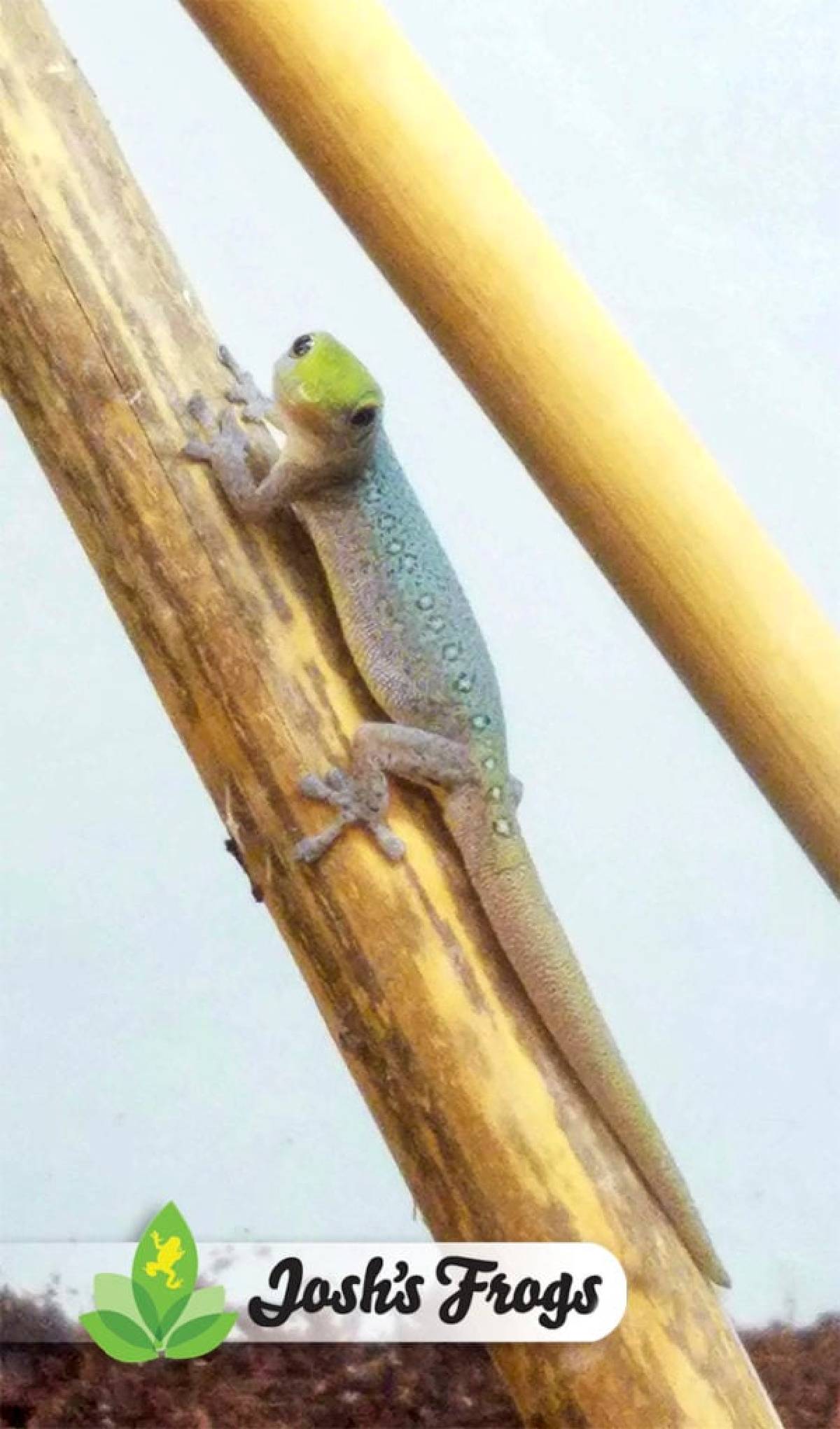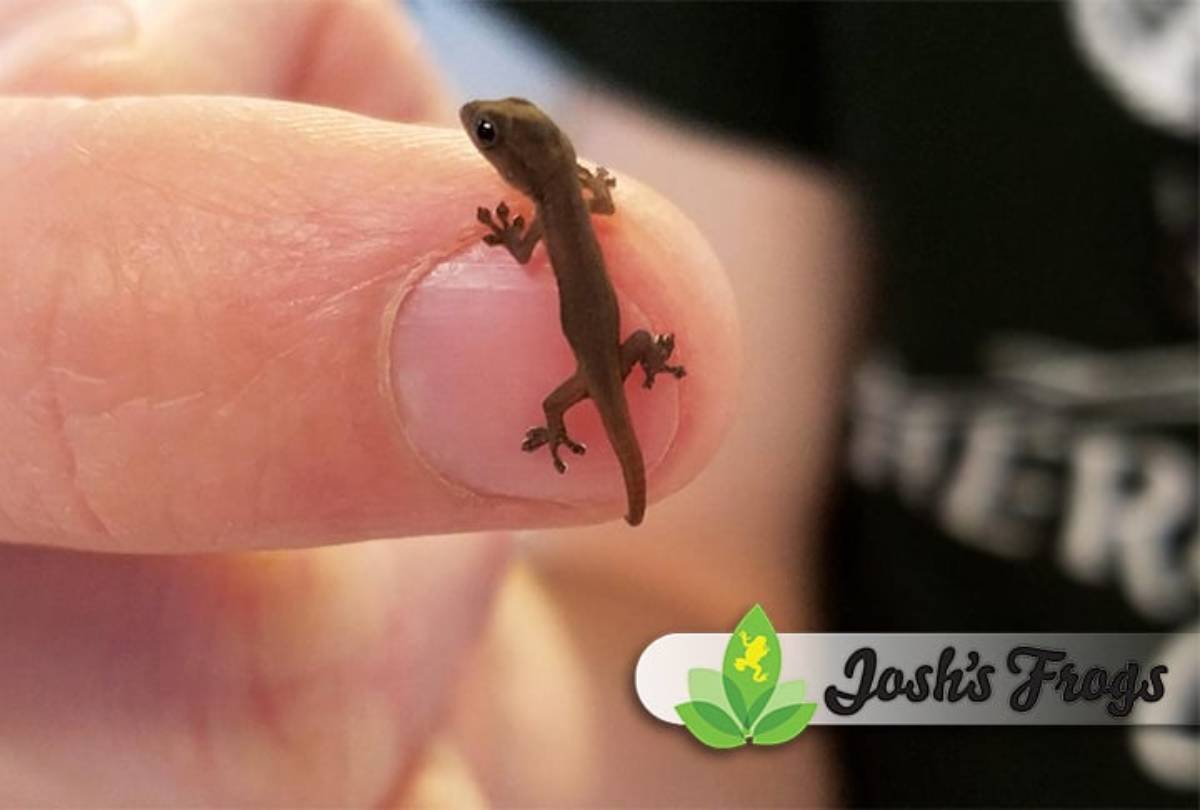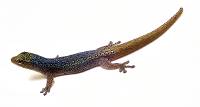Josh's Frogs
Cameroon Dwarf Gecko - Lygodactylus conraui Care Sheet
NAME/REGION
Cameroon dwarf geckos ( Lygodactylus conraui ) are a small species that hails from Cameroon and surrounding countries. These arboreal geckos are small and fast; while they’re not the best for handling, they make great display animals as they are bold for their size, making them a joy to watch move about their environment.COLORATION
Juveniles tend to be brown in color with a conspicuously red tail. When they reach adulthood, they become a beautiful combination of a yellow head and tail with a light blue body. They also have two rows of small white circles which descend down their backs. Males tend to exhibit brighter colors than females.
HOUSING
A 12x12x12 Exo Terra cube can comfortably house two Cameroon dwarf geckos, and a 10-gallon tank can easily house two to four geckos. A variety of substrate mixtures can be used, with coco fiber or peat moss as a base. Josh’s Frogs BioBedding also works well with this species and will help propagate live plants and isopods in the setup (both highly recommended with this species). As an arboreal species that enjoys climbing, these geckos will enjoy a setup filled with pieces of cork bark, bamboo, branches, and live or fake plants. Leaves on the substrate will provide additional hiding places for this small species, although they will spend little time on the ground. Cameroon dwarf geckos should be kept at an ambient temperature between 72-78F. A basking area up to 80-85F can also be provided using a halogen light. Being a diurnal species, UV light is recommended (read our blog on diurnal/nocturnal lighting and D3 needs here). Both temperature and humidity can be monitored with a thermometer/hygrometer. Cameroon dwarf geckos require a humid setup. Ambient humidity should remain around 60-70%. Daily misting is recommended to keep the substrate moist and also provide water droplets from which the geckos can drink. There should be enough ventilation such that any water droplets on the walls of the enclosure dry out by the next day. A shallow water dish can also be supplied but is not necessary with daily misting.SIZE
These small geckos only reach 2-2.5 inches as adults.DIET
Cameroon dwarf geckos can be fed a staple diet of small crickets, melanogaster fruit flies, isopods, and springtails. A good rule of thumb for size is to only offer insects whose length does not exceed the space in between the gecko’s eyes. Generally, hatchling Cameroon dwarf geckos should be fed springtails or melanogaster fruit flies, adding ⅛-inch isopods and crickets as they grow older. Feeder insects should be dusted with a vitamin/mineral supplement. Cameroon dwarf geckos can also be offered gecko diet mix once a week to supplement their diet.SEX
Cameroon dwarf geckos can be sexed by dimorphism in coloration: males tend to be brighter in color, while females are dull and may retain their brownish color characteristic of juveniles.BREEDING
During the breeding season, these geckos will lay pairs of eggs about once a month. They are egg-gluers and will adhere their eggs to plants, branches, enclosure walls, or small tubes if they are provided. We recommend using Josh's Frogs Egg Laying Tubes. [button-brown url="https://new.joshsfrogs.com/p/cameroon-dwarf-gecko-lygodactylus-conraui-geck005" target="_blank" position="center"]Buy A Cameroon Dwarf Gecko[/button-brown]
[button-brown url="https://new.joshsfrogs.com/p/cameroon-dwarf-gecko-lygodactylus-conraui-geck005" target="_blank" position="center"]Buy A Cameroon Dwarf Gecko[/button-brown]

